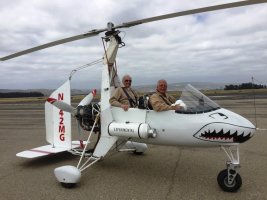https://www.ecfr.gov/current/title-14/chapter-I/subchapter-C/part-43
43.15 Additional performance rules for inspections.
(a)
General. Each person performing an inspection required by
part 91,
125, or
135 of this chapter, shall—
(1) Perform the inspection so as to determine whether the aircraft, or portion(s) thereof under inspection, meets all applicable airworthiness requirements; and
(2) If the inspection is one provided for in part 125, 135, or
§ 91.409(e) of this chapter, perform the inspection in accordance with the instructions and procedures set forth in the inspection program for the aircraft being inspected.
(b)
Rotorcraft. Each person performing an inspection required by Part 91 on a rotorcraft shall inspect the following systems in accordance with the maintenance manual or Instructions for Continued Airworthiness of the manufacturer concerned:
(1) The drive shafts or similar systems.
(2) The main rotor transmission gear box for obvious defects.
(3) The main rotor and center section (or the equivalent area).
(4) The auxiliary rotor on helicopters.
(c)
Annual and 100-hour inspections.
(1) Each person performing an annual or 100-hour inspection shall use a checklist while performing the inspection. The checklist may be of the person's own design, one provided by the manufacturer of the equipment being inspected or one obtained from another source. This checklist must include the scope and detail of the items contained in appendix D to this part and
paragraph (b) of this section.
(2) Each person approving a reciprocating-engine-powered aircraft for return to service after an annual or 100-hour inspection shall, before that approval, run the aircraft engine or engines to determine satisfactory performance in accordance with the manufacturer's recommendations of—
(i) Power output (static and idle r.p.m.);
(ii) Magnetos;
(iii) Fuel and oil pressure; and
(iv) Cylinder and oil temperature.
(3) Each person approving a turbine-engine-powered aircraft for return to service after an annual, 100-hour, or progressive inspection shall, before that approval, run the aircraft engine or engines to determine satisfactory performance in accordance with the manufacturer's recommendations.


